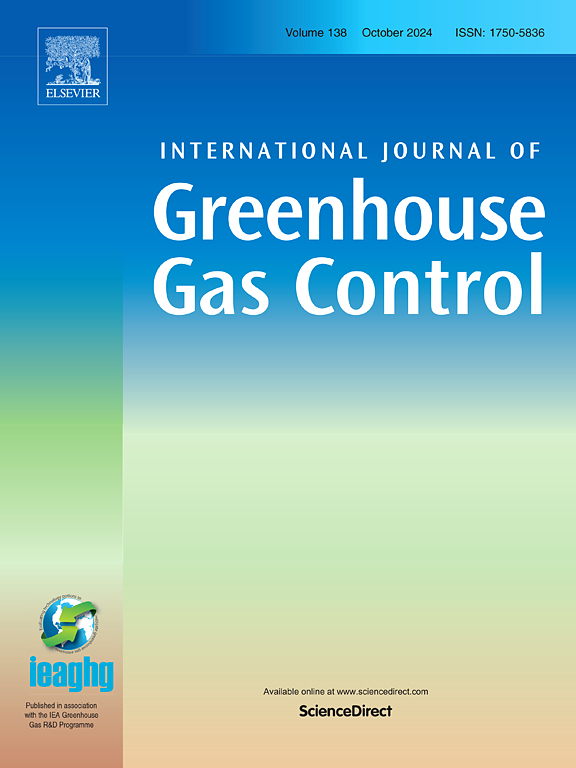Cost assessment of optimal seawater monitoring for unexpected CO2 leakage from an offshore reservoir
IF 5.2
3区 工程技术
Q2 ENERGY & FUELS
International Journal of Greenhouse Gas Control
Pub Date : 2025-09-01
DOI:10.1016/j.ijggc.2025.104455
引用次数: 0
Abstract
Carbon Capture and Storage (CCS) has garnered attention as a mitigation strategy for the global warming and a means to achieve carbon neutrality. In Japan, monitoring CO2 concentration in the sea is mandatory for subsea geological CO2 storage due to concerns about the potential negative impact on marine environments in the event of accidental CO2 leakage. However, the monitoring method currently conducted in Japan is not only expensive but also lacks fully scientific grounding. In this study, we aimed to develop a method for optimising the observation point placement to detect biologically significant CO2 seepage. In the method, observation areas were identified based on the advection-diffusion simulation of dissolved CO2 concentration emitted from every location in a possible seepage area when the CO2 seepage rate was varied from 1000 to 25000 tonnes/year. Then, within the observation area, optimal observation locations were determined using a greedy algorithm. Finally, monitoring costs were calculated based on the number of observation points, the travel distance of an observation boat, and necessary observation days. The results showed a negative nonlinear relationship between detectable seepage rates and monitoring costs, which decreases rapidly up to seepage rates of 5000 tonnes/year and then remains almost constant above 10000 tonnes/year. This study suggests that monitoring policies could be determined according to risk tolerance and budget constraints for seepage that must be detected considering biological impacts.
针对近海水库意外CO2泄漏的最佳海水监测成本评估
碳捕集与封存(CCS)作为一种减缓全球变暖的战略和实现碳中和的手段受到了广泛关注。在日本,监测海洋中的二氧化碳浓度是海底地质二氧化碳储存的强制性要求,因为担心一旦发生意外的二氧化碳泄漏会对海洋环境产生潜在的负面影响。然而,目前在日本进行的监测方法不仅昂贵,而且缺乏充分的科学依据。在这项研究中,我们旨在开发一种方法来优化观测点的放置,以检测具有生物意义的二氧化碳渗漏。该方法通过对CO2渗流速率在1000 ~ 25000 t /年范围内可能渗流区域内各位置的溶解CO2排放浓度进行平流扩散模拟,确定观测区域。然后,在观测区域内,利用贪心算法确定最优观测位置。最后,根据观测点数量、观测船航行距离和观测所需天数计算监测费用。结果表明,可探测渗透率与监测成本之间存在负非线性关系,渗漏率在5000吨/年以下迅速下降,然后在10000吨/年以上基本保持不变。该研究表明,对于考虑生物影响而必须检测的渗漏,可以根据风险承受能力和预算约束来确定监测策略。
本文章由计算机程序翻译,如有差异,请以英文原文为准。
求助全文
约1分钟内获得全文
求助全文
来源期刊
CiteScore
9.20
自引率
10.30%
发文量
199
审稿时长
4.8 months
期刊介绍:
The International Journal of Greenhouse Gas Control is a peer reviewed journal focusing on scientific and engineering developments in greenhouse gas control through capture and storage at large stationary emitters in the power sector and in other major resource, manufacturing and production industries. The Journal covers all greenhouse gas emissions within the power and industrial sectors, and comprises both technical and non-technical related literature in one volume. Original research, review and comments papers are included.

 求助内容:
求助内容: 应助结果提醒方式:
应助结果提醒方式:


